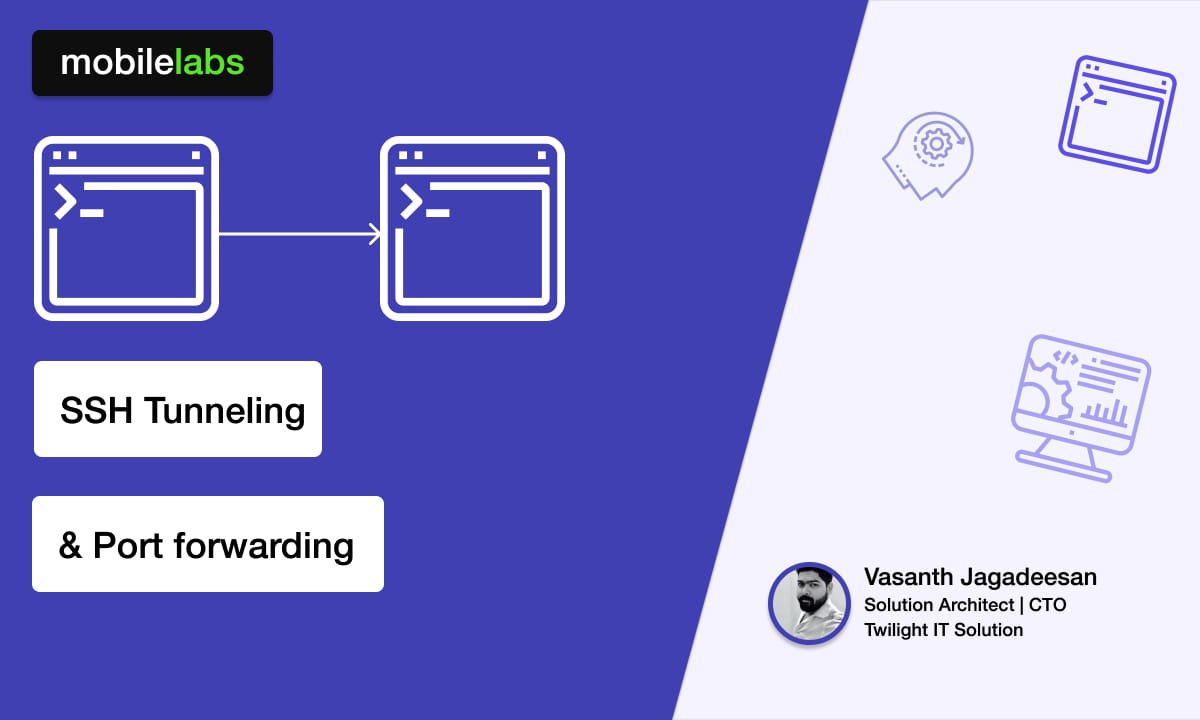DevOps - SSH tunneling and port forwarding
Tunneling is quick method for establishing connecting between local computer and a remote machine. Without any additional setup just using SSH protocol.

What is SSH tunneling
Tunneling used to connect two machine and access the ports from the remote machine or local machine using ssh protocol. This method is widely used in administering server infrastructure management.
What you will learn
- Connecting remote server and accessing its internal ports from local machine
- Reverse SSH tunneling - Accessing local ports from the remote server
Access remote server port form the local machine
Connect to the remote server 10.10.10.1 and try to access it's internal port 8080
from the localhost:8000.
-L argument is used to connect as SSH tunnel.
ssh -L 8000:localhost:8080 [email protected]Note: 10.10.10.1 is used for demonstrating purpose only. You should use your server IP instead.

Now using localhost:8000 we can access the 10.10.10.1:8080 port.
Reverse SSH tunneling - Accessing local ports from the remote server
We have MySQL database 10.10.2.10:3306 in our on premise network which is not accessible by outside of the network. We need to connect this to web server in AWS Cloud 11.11.1.10.
-R argument is used to connect as SSH reverse tunnel.
ssh -R 3306:10.10.2.10:3307 [email protected]Note: 11.11.1.10 is used for demonstrating purpose only. You should use your server IP instead.

Now from AWS 11.11.1.10:3307 we can access the 10.10.2.10:3306 port.
How to forward all ports
You create simple proxy by forwarding all ports from source to destination server.
-D argument is used to forward dynamic ports.
ssh -D localhost:1337 [email protected]Conclusion
SSH tunneling is simple but its very powerful, we have seen how to use ssh tunneling and reverse ssh tunneling.




